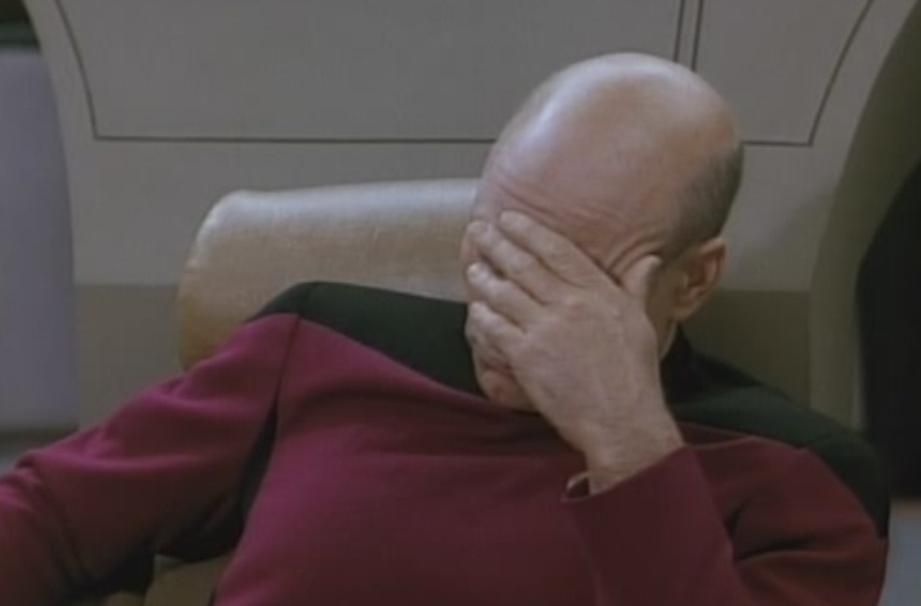I have a well qualified ambitious candidate I am working who has been suddenly rejected from a job opportunity. He’s a hardworking guy, currently employed in a similar role and looking to make a change. My counterpart at my client company is desperate to fill this position that’s been open for months. I speak with the gentleman and he thinks the phone interview went great, and initially the hiring manager is expressing interest at bringing him onsite. What could have happened I wonder? What went wrong?
A recently tagged picture on a popular social media platform involving an upside down plastic flamingo and a couple cans of beer had caused the screeching halt. Someone cue the Picard facepalm meme.
While I do not think it’s expected that a candidate is a saint (we’re all human right?) I do think it’s a reasonable expectation in this day and age to be aware of your digital presence. Even more so when you’re on the job hunt. So, help us all out, yourself most of all, and take some quick actionable steps to make sure your social media can withstand the scrutiny of the hiring microscope and put your best foot forward.
Create a Professional Presence
LinkedIn, in particular, is an incredible resource on both sides of the job search spectrum – hiring managers and recruiters use it daily, and job seekers should be networking with companies and colleagues that share similar interests. Even on other social media platforms outside of the professional networks, you can add value to your professional image. Twitter and Facebook allow you to create an “About Me” section where you should definitely display your career positions if you’re in search mode even more so.
And while you’re on LinkedIn, go ahead and add some details to your roles, fill out the skills section, and connect with references who can attest to the value you add. Every little bit helps and you may be surprised at what people are looking at.
Privacy Settings
Back on Facebook, which is still the most common social media platform in the world, there are a few other details to pay attention to. I hope you don’t have any beer bonging pictures up online, but even the best of us have been tagged in pictures that don’t capture our best side. In particular, I suggest you set your privacy settings so even the most avid stalkers aren’t coming across those embarrassing pictures. You might be able to hide your profile from all searches, though it could be worth leaving the basic info viewable. If a hiring manager takes a look and sees a decent profile picture with your current position listed underneath they may feel more confident in moving forward. No promises, but it’s definitely not hurting you then!
The Google Test
Now, I always suggest doing a quick Google search of yourself to see if anything unseemly turns up. It’s hard to prepare if you haven’t done your homework and if you find something you can take immediate action. A quick search should also demonstrate if you’ve got your settings and presence set up well on the social media platforms you use. It only takes a few seconds and it’s well worth the time to understand what you’re putting out there for the world to see, or what someone else might be.
Common Sense
Last and certainly not least, try to be on your best behavior. It feels kind of intuitive, I know, but you’d be surprised how many people aren’t paying attention to what’s online and who might be noticing. One lewd comment or offensive picture could make or break an opportunity, you just never know.
Short and sweet, and it should make a substantial difference for the average job seeker. If you’re still feeling uncertain there are plenty of other great resources with a quick “social media do’s and don’ts” Google search.
Happy job hunting!!
Written by Stefan Friend

